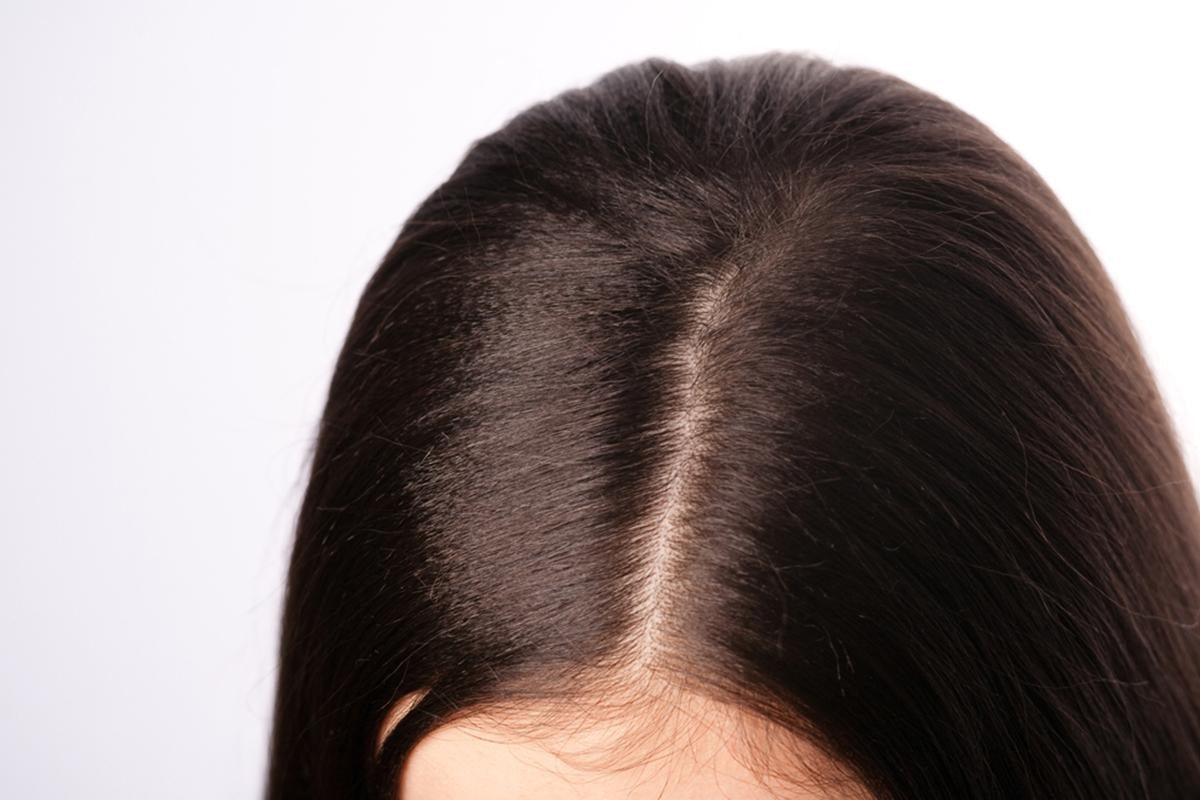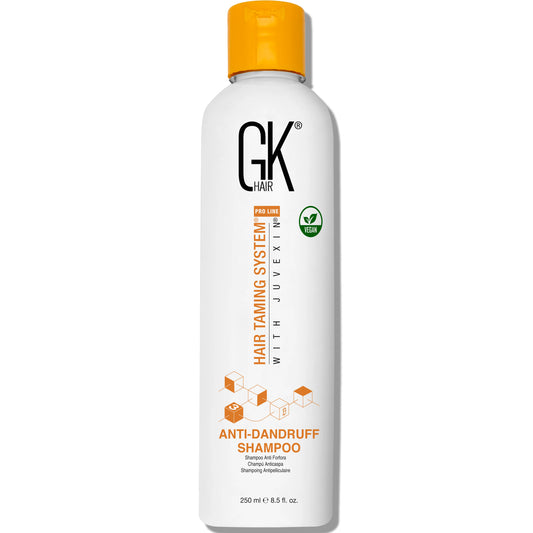Do you suffer from dandruff? Then you know how frustrating it can be to find the right solution. While there are many over-the-counter products available, it's important to understand why these products work and how best to use them for maximum benefit. That's where this blog post comes in! In "The Complete Guide To Using Anti Dandruff Shampoo For Maximum Benefits" we'll provide a comprehensive guide on how to effectively use anti-dandruff shampoo for maximum results.
We'll discuss tips and tricks on the best application techniques, along with ways to ensure that your scalp remains healthy and free of dandruff. Plus, discover why it's important to thoroughly remove all the shampoo from your hair after washing, as well as insights into what ingredients can help alleviate the symptoms of dandruff. Get informed advice on using anti-dandruff shampoo today!
How does Anti Dandruff Shampoo work?
Anti-dandruff shampoo uses active ingredients to help reduce dandruff and keep it under control. The active ingredients in anti-dandruff shampoo work by controlling the presence of a fungus known as Malassezia globosa, which is an organism that naturally occurs on our scalps. This fungus produces oleic acid, which can irritate our scalps and cause flaking and redness.
When using Anti-dandruff shampoo, the active ingredient works to reduce the amount of oleic acid produced by Malassezia globosa and limit the irritation caused to our scalp. The most common active ingredients used in anti-dandruff shampoos are selenium sulfide, pyrithione zinc, salicylic acid, coal tar, and ketoconazole. Each of these ingredients works differently to target different types of dandruff and provide relief from itching or flaking while cleaning your hair at the same time.
Selenium sulfide is often used as an antifungal agent to help reduce scalp irritation caused by Malassezia globosa overgrowth. Pyrithione zinc is also effective against dandruff due to its antifungal properties, though it may be less irritating than selenium sulfide for some people. Salicylic acid works by exfoliating dead skin cells; this helps dissolve flakes away from your scalp since they are often stuck to existing skin cells. Coal tar has antifungal properties that help reduce Malassezia globosa growth on your scalp, but can also cause discoloration in some cases. Ketoconazole is an antifungal drug that helps reduce inflammation and irritation while keeping fungal growth in check.
How to use Anti-dandruff Shampoo? Step By Step Guide
1. Wet Your Hair Thoroughly
Before applying anti-dandruff shampoo, thoroughly wet your hair with lukewarm water. This helps to open up the hair cuticles and allows the shampoo to penetrate more effectively.
2. Apply the Shampoo
Dispense a generous amount of anti-dandruff shampoo into your palm and lather it between your hands. Gently massage the shampoo into your scalp using your fingertips, focusing on areas where dandruff is most prevalent.
3. Let It Sit
Allow the shampoo to sit on your scalp for a few minutes to allow the active ingredients to work their magic. Use this time to enjoy a relaxing scalp massage, which can further help to loosen dead skin cells and improve circulation.
4. Rinse Thoroughly
After letting the shampoo sit, rinse your hair thoroughly with lukewarm water until all traces of shampoo are removed. Be sure to rinse for at least one minute to ensure no residue is left behind, which could contribute to further irritation.
By understanding how to use anti-dandruff shampoo correctly and following a consistent hair care routine, you can effectively combat dandruff and enjoy a healthier, flake-free scalp. Remember to choose the right shampoo for your hair type, follow the GK Hair instructions, and be patient – your scalp will thank you for it.
Mistakes to avoid while applying Anti-dandruff shampoo
Using an anti-dandruff shampoo to reduce dandruff is an effective way to manage the condition, however there are some mistakes that even experienced users make when applying the product. Here are some of the most common mistakes to avoid when using anti-dandruff shampoo.
The first mistake people often make when using anti-dandruff shampoo is not reading the instructions on the bottle carefully. As every shampoo uses different active ingredients, it’s important to read and understand how each brand works and what amounts you need for optimal results. Follow the manufacturer's instructions as closely as possible and never use more than what is recommended on the bottle.
Another common mistake is not rinsing thoroughly after washing with anti-dandruff shampoo. Leaving any trace of residue on your scalp or hair can cause dryness and irritation, so be sure to rinse until all traces of lather are gone before drying off with a towel or air drying as normal.
Finally, many people may use too much pressure when massaging in the shampoo at first application and this can lead to scalp irritation or inflammation over time. When applying shampoo, be sure to be gentle and massage it into your scalp in slow circles for at least two minutes before rinsing out completely. This will ensure that your scalp gets enough time to absorb all the active ingredients while also protecting against excessive irritation or damage from aggressive scrubbing motions.
Our dandruff-fighting ingredients
GK Hair’s Anti-Dandruff Shampoo is specifically designed to combat the effects of dandruff. This unique formula features a blend of ingredients that work together to provide maximum relief while keeping fungal growth in check.
The shampoo utilizes the power of zinc which has demonstrated strong antifungal properties against Malassezia globosa fungi. This powerful component effectively fights dandruff from the source.
GK Hair’s Anti-Dandruff Shampoo also contains Juvexin, a keratin based anti-aging protein blend that restores your hair from the inside out and protects your hair from environmental damage.
In order to maximize effectiveness, GK Hair recommends using small amounts of the shampoo twice a week focusing primarily on the scalp rather than hair and massaging it into your scalp in slow circles for at least two minutes before rinsing out completely. To ensure complete removal of any residue from your scalp or hair, rinse thoroughly with lukewarm water until all traces of lather are gone before drying off with a towel or air drying as normal.
Takeaway
By following the tips and techniques outlined in this guide, you can effectively use anti-dandruff shampoo to not only alleviate the symptoms of dandruff but also prevent its recurrence. From choosing the right shampoo to incorporating it into your hair care routine, every step plays a crucial role in achieving maximum benefits. So, take charge of your scalp health today and bid adieu to the pesky flakes once and for all!
FAQ's
FAQ 1: How often should I use anti-dandruff shampoo to effectively combat dandruff?
Answer: The frequency of anti-dandruff shampoo use depends on the severity of your dandruff. In general, it's recommended to use anti-dandruff shampoo at least twice a week. If your dandruff is more persistent, you may use it more frequently. Once your dandruff is under control, you can gradually reduce the frequency to maintain a healthy scalp. Consistency is key to maximizing the benefits of anti-dandruff shampoo.
FAQ 2: Can I use regular shampoo along with anti-dandruff shampoo in my hair care routine?
Answer: Yes, you can use regular shampoo in conjunction with anti-dandruff shampoo. However, it's essential to prioritize the use of the anti-dandruff shampoo to target the specific issue. Use the anti-dandruff shampoo as directed to address the dandruff problem, and if you prefer, you can use a regular shampoo on the days when you are not using the anti-dandruff formula to keep your hair clean and well-nourished.
FAQ 3: How long does it take to see results from using anti-dandruff shampoo?
Answer: The time it takes to see results varies from person to person. Some individuals may notice improvements after just a few uses, while others may take a few weeks. It's important to be patient and consistent with the application of anti-dandruff shampoo. If you don't see improvements after a reasonable period, it may be helpful to consult with a dermatologist to explore other potential causes or treatments for persistent dandruff issues.














It is an informative and learning topic on How to Use Anti-Dandruff Shampoo for Maximum Benefits. Thanks for sharing the useful blog. All scalp and hair lovers should go through your topic and will benefit. I learned a lot about using of anti-dandruff shampoo from your topic. Is it useful to use regularly or in intervals? I like your blog and also prefer organic products.
Leave a Comment